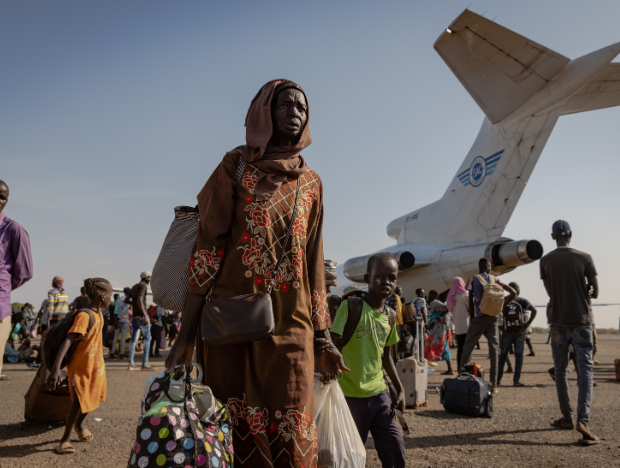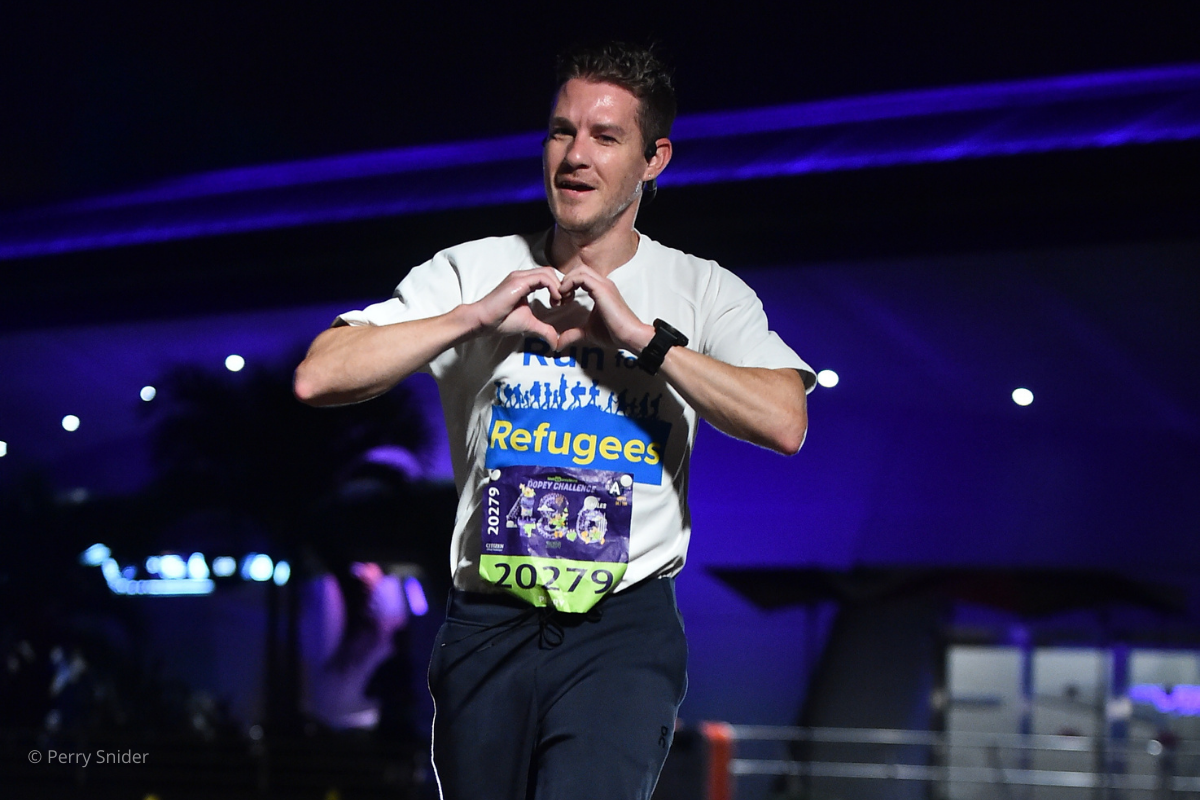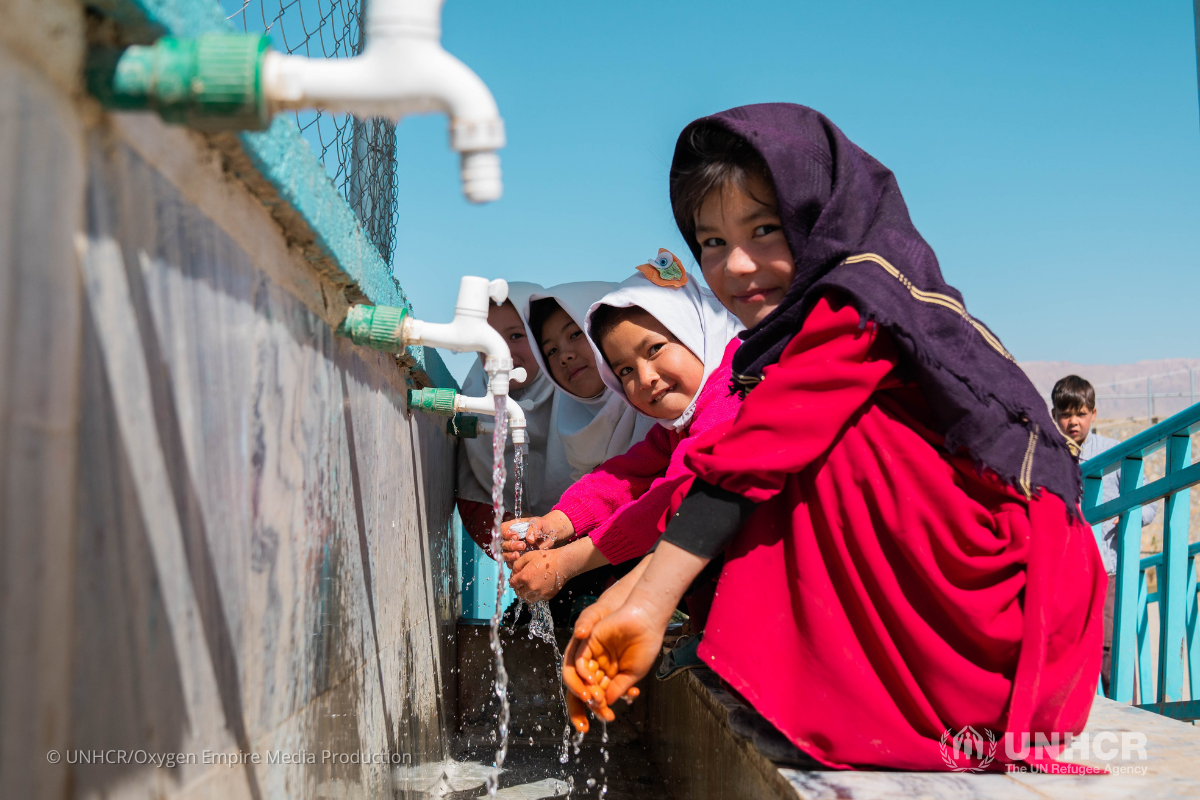Venezuelans Find Relief in Neighboring Colombia
The precious first steps to safety for thousands of Venezuelan refugees and migrants often begin by crossing the 980-foot Simon Bolivar International Bridge that separates Venezuela and Colombia. On the Venezuelan side, there is the threat of gang warfare, civil violence, food insecurity and a lack of health services. On the Colombian side, there is a great deal of uncertainty, but there is a shot at safety. Fleeing is the only choice for families trying to secure a safer, brighter future.
In September, USA for UNHCR’s Nic Feeney traveled to Colombia to meet Venezuelans fleeing the crisis in their home country and to witness first-hand how UNHCR is providing support and protection to those in need. The following recounts some of his experience from the trip.
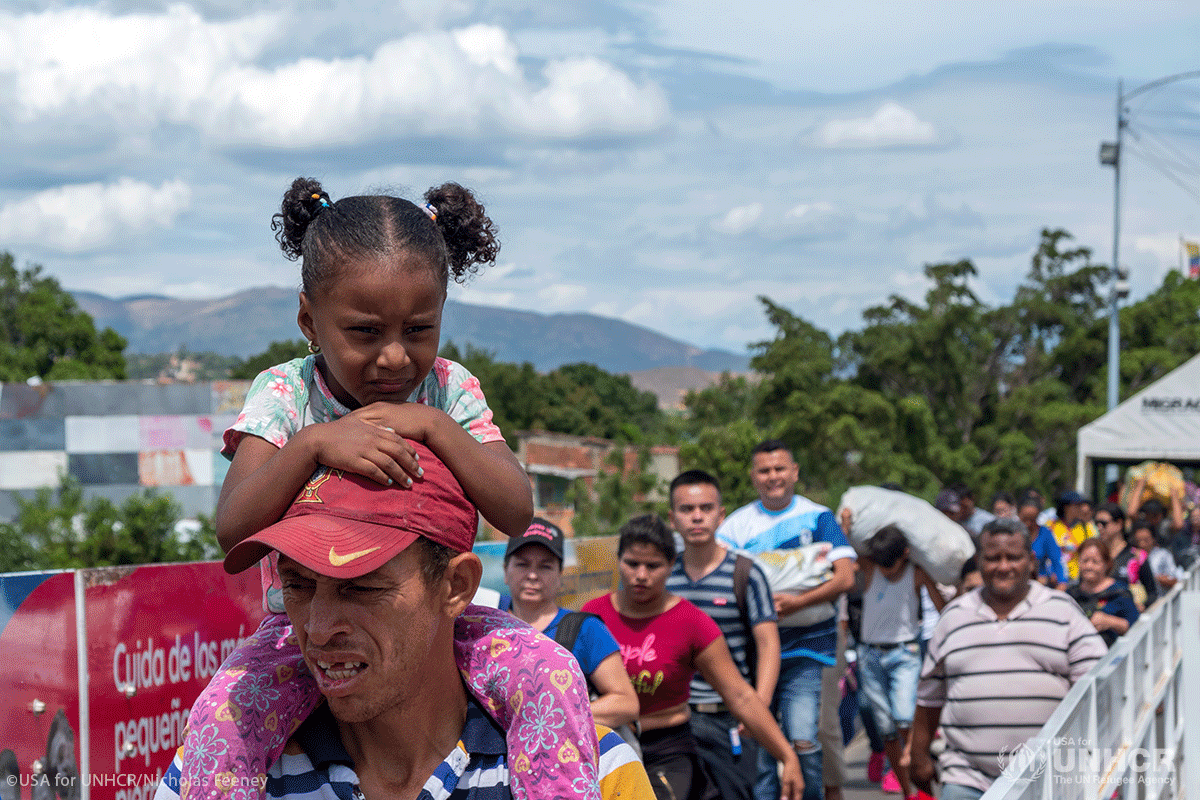
Cúcuta: A Helping Hand
As Venezuelans step onto Colombian soil, there are immediate reasons to be optimistic. UNHCR, the UN Refugee Agency, has a visible presence. There are signs of welcome, there are signs proclaiming Colombia as a zone free of discrimination, and most importantly for many families fleeing, there is a sign pointing to a reception center with medical and child friendly facilities.
Just a few paces on the Colombian side of the border a medical center greets people seeking care. The center operates out of a large outdoor pavilion that can accommodate hundreds of people every day. It’s busy the day I visit, but with the relief of a place to rest out of the hot sun, families are happy and many want to share their story.
That’s how I met Daniela* and her 5-month-old daughter Maria.
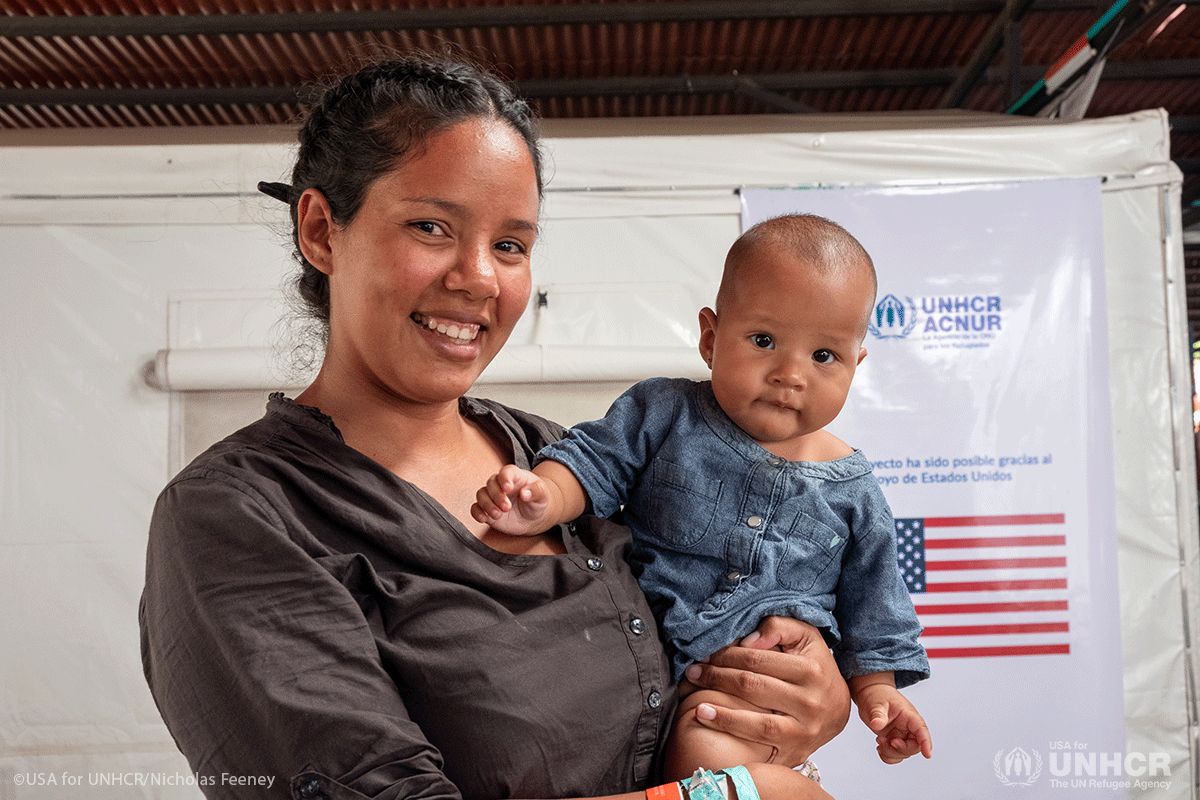
Daniela first came to Cúcuta five months ago to have her baby because the medical care was unreliable in Venezuela. After giving birth, Daniela, her husband and their newborn child went back to Venezuela hoping the situation would improve. Unfortunately, things have gotten worse.
On the day I met the family, they had decided not to go back to Venezuela again. “The situation is very dangerous there,” she told me.
The next stop for many Venezuelans after crossing the border is to visit La Divina Providencia, a communal kitchen run by the Archdiocese of Cúcuta. With volunteer workers, the kitchen serves nearly 8,000 meals a day – I was told the queue to enter begins to form before dawn. Recently, UNHCR helped refurbish the facilities and installed showers and toilets. UNHCR is also helping connect newly arrived Venezuelans to legal and psychosocial services.
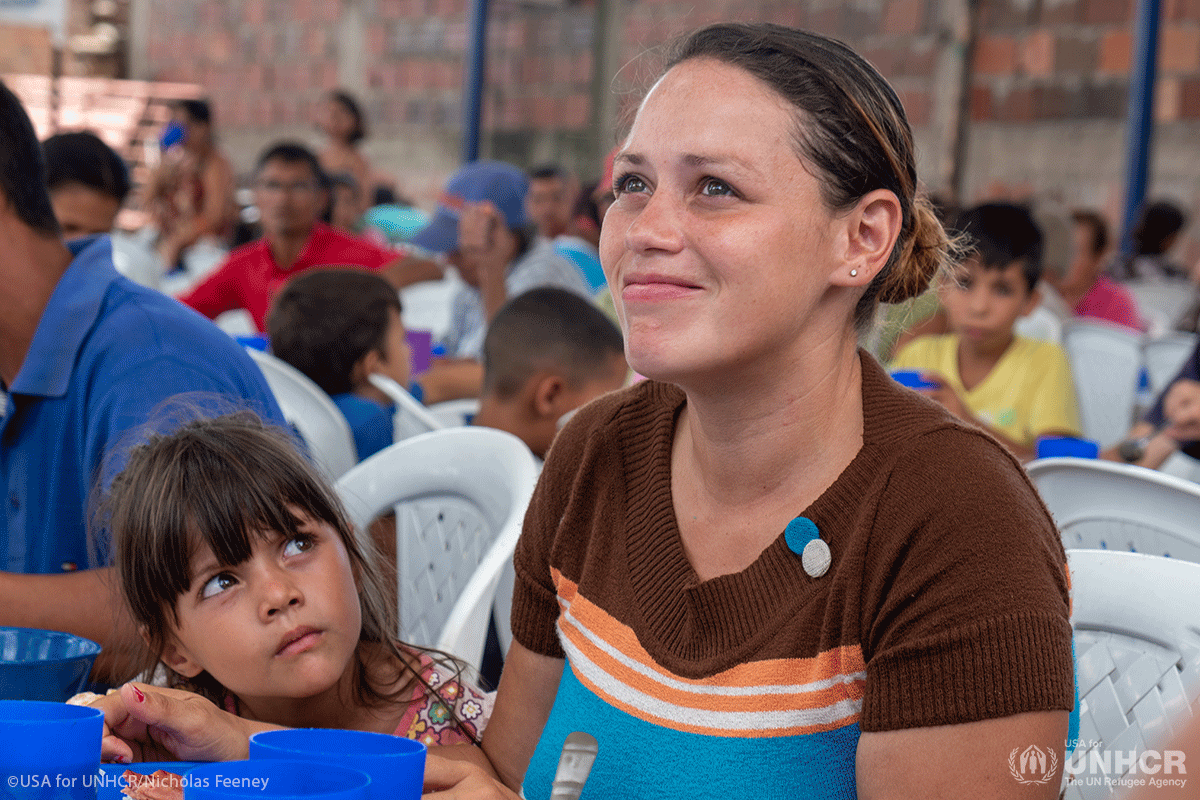
I first saw Alexandra and her daughter Talia at the medical center. An hour later I saw them again, this time at the communal kitchen. After a meal, their first in two days, and some much-needed rest, the family was very happy to talk. Alexandra told me they had taken a 12-hour bus ride to the border and walked across the bridge just a few hours before. Like many others, Alexandra had decided not to go back.
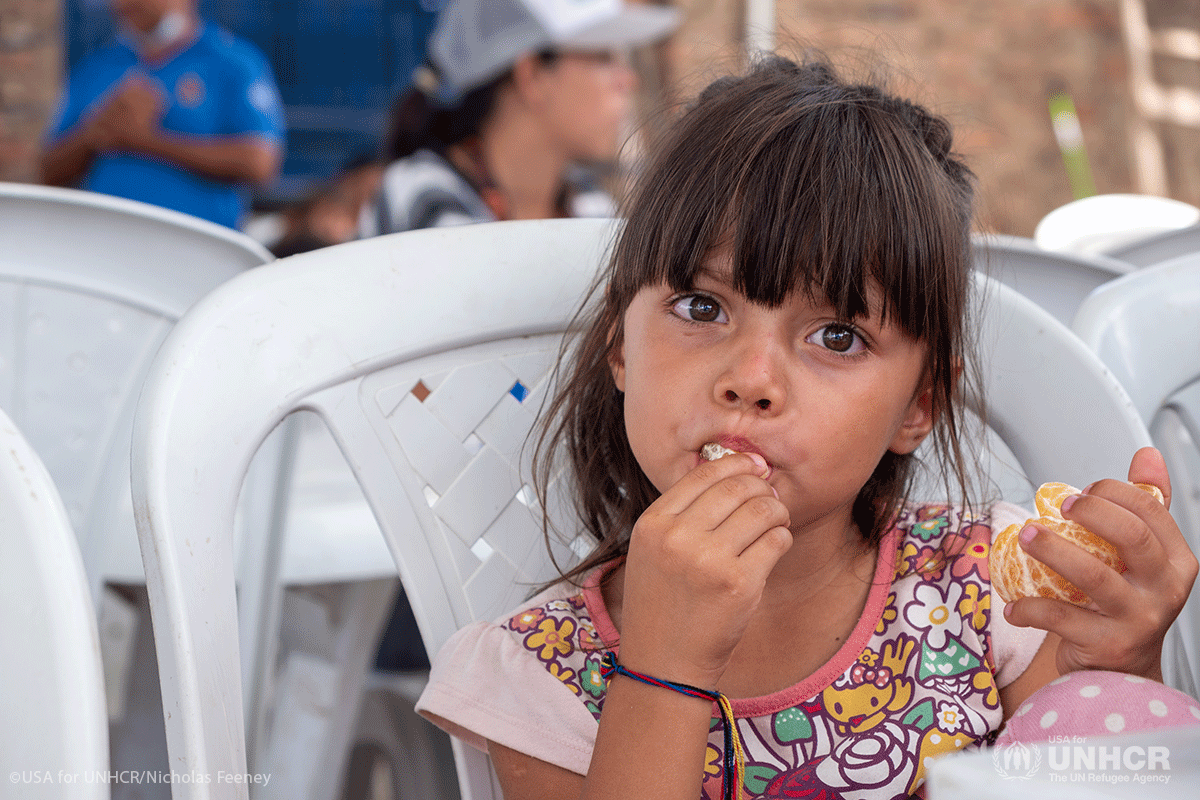
Despite the circumstances and the long trip, 4-year-old Talia was very content. She told me her favorite color was red and that she loved oranges.
Alexandra had no immediate plans to leave Cúcuta, but she also did not know where her family would stay that night.
Although Venezuelans are greeted with emergency care in Cúcuta, more than 80 percent who decide to stay in Colombia will continue on to other towns and cities in the country. Some will embark on the journey to Medellín where there are more opportunities for stability and work.
Medellín: A Reason to Hope
A few miles outside of Cúcuta, Route 55 heads south away from the border toward the town of Pamplona. It’s the first leg of the 375 mile walk to Medellín – and it’s perhaps the most difficult.
The landscape and climate of eastern Colombia is dramatic. Whereas Cúcuta rests in a valley that is hot and humid, with temperatures reaching mid-90s most days, Pamplona is a world away. High in the mountains 40 miles south, the elevation increases more than 8,000 feet and the temperature drops nearly 50 degrees. Many Venezuelans are simply unprepared for the journey. Along the highway outside Cúcuta I see dozens of families walking, many only wearing t-shirts and flip-flops or Crocs.
The destination is Medellín, where there are more services and opportunities to restart life. It’s there that I met Johan, Patricia and their children.
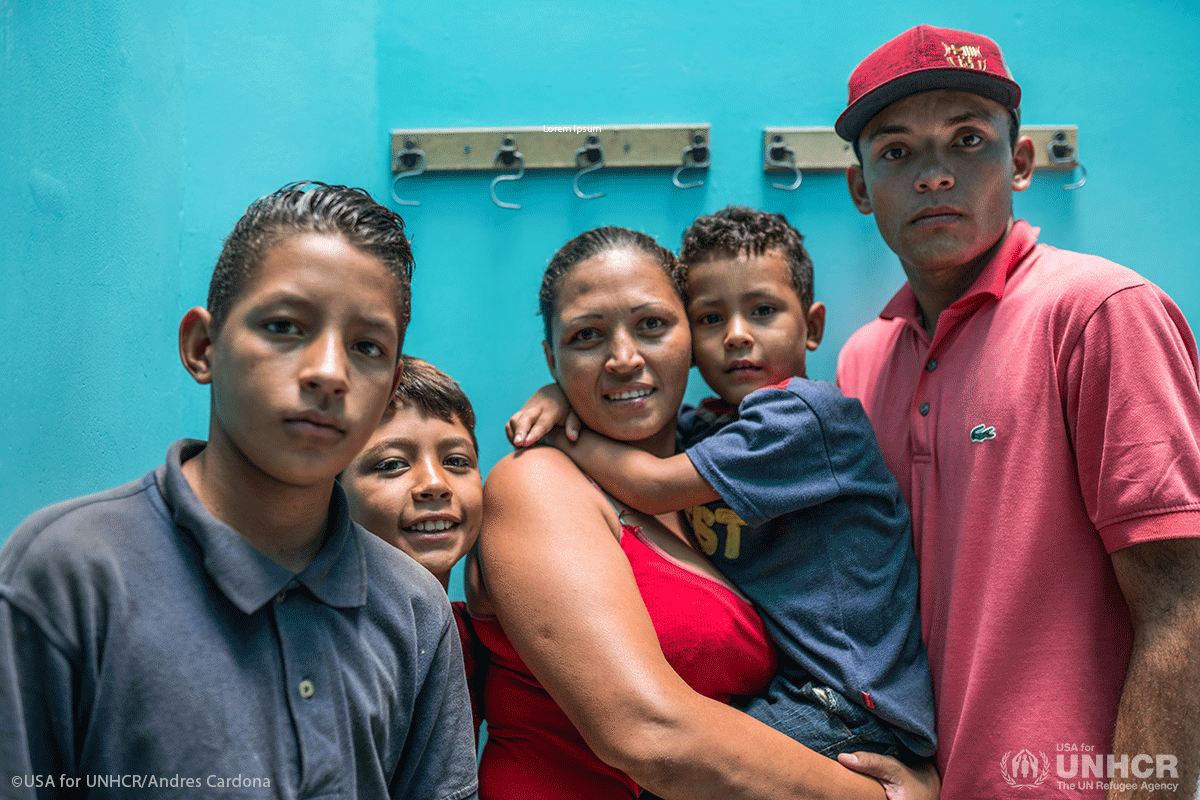
“The walk from Cúcuta to Medellín took us about 18 days,” said Johan.
That’s roughly equivalent to walking a marathon a day – with a 4-year-old in tow.
I met the family at Casa del Buen Dios, a shelter jointly supported by UNHCR and the Colombian Red Cross. Families can stay for two weeks and are provided three meals a day. Casa del Buen Dios also provides services to help Venezuelans find stable housing as well as providing primary healthcare, psychosocial services and legal consultations.
“We walked with other families from Venezuela. Some we knew, some we didn’t,” Johan shared. “The walk was long and difficult and finding shelter each day was hard. When we found shelter it was only for the kids and my wife. I had to sleep outside.”
But on this day the family is safe, happy and ready for the next steps.
“We are going to stay in Medellín and keep fighting to find stability for the children,” said Patricia whose three children have been out of school for more than a year.
Bogotá: The New Beginning
Bogotá is a city of new beginnings. In recent years, nearly 400,000 Venezuelans have sought refuge there, finding both opportunities and a generous, welcoming community.
Escuela República Bolivariana de Venezuela is one place providing a new beginning. The high school is one of 20 schools in Bogota UNHCR supports in coordination with the Mayor’s office to expand a campaign aimed at curbing xenophobia against Venezuelans among children, parents and the wider community. It’s no coincidence that the name of the school shares the name of the country many of its students call home.
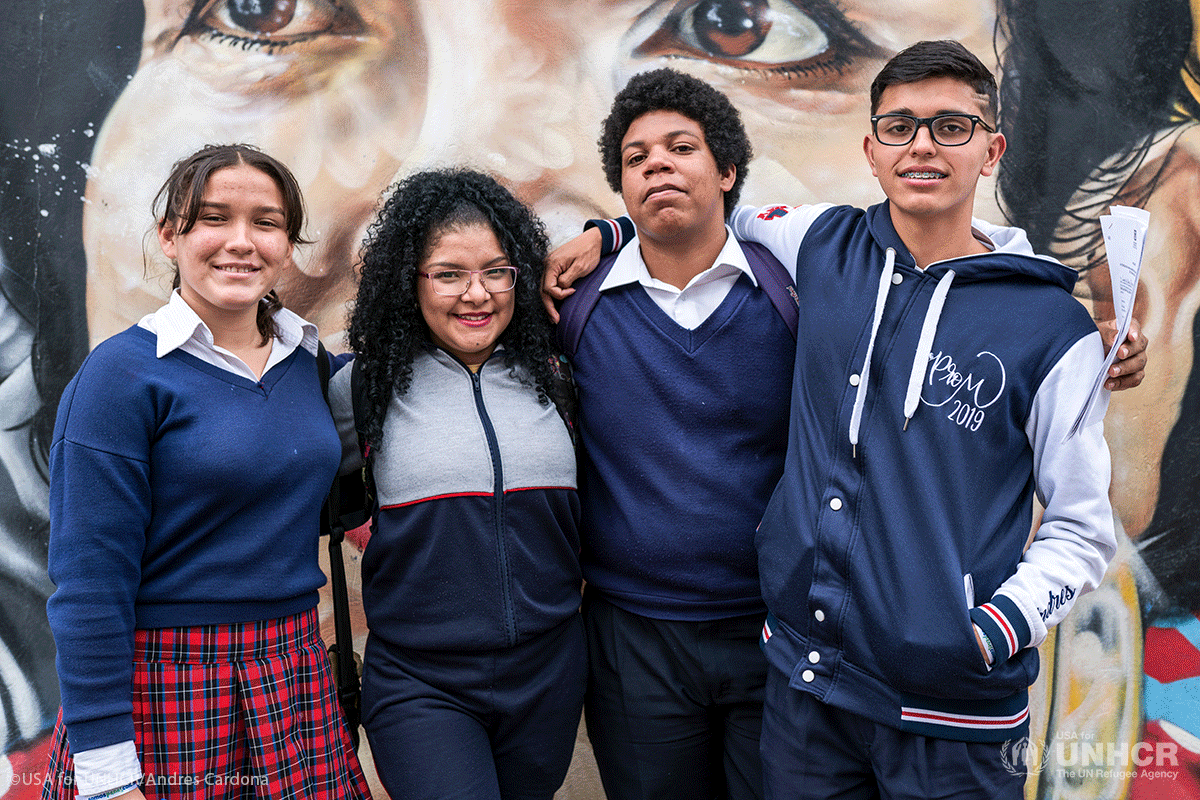
The school is attended by Venezuelan and Colombian students. Some of the Colombian students are also survivors of trauma and violence, having been forced to flee other parts of the country to escape drug trade violence and armed militia activity. But there is much more than a shared history of violence that binds this school community – there is genuine feeling of warmth and welcoming among the students, as well as the teachers and administration.
Creativity and self-expression are the norm here. The hallways and the school yard are adorned with student art and murals. Even the outside of lockers are personalized with paintings, images and quotes.
Sharing personal stories is also the norm.
Two Venezuelan students courageously shared what the school and their fellow classmates meant to them. Fighting back tears and speaking to a room full of strangers, the students were a testament of resilience and hope – and a shining example of the importance of the program and this school.
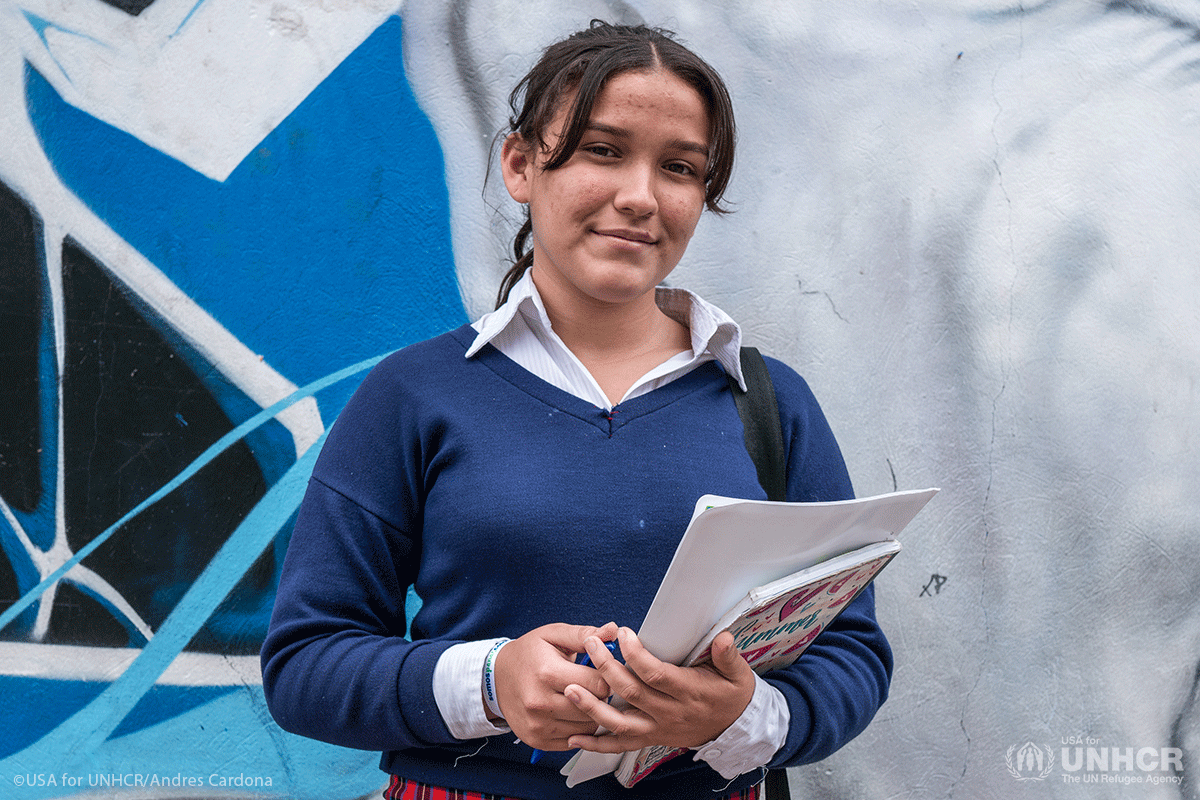
“It’s like breathing different air. I feel free here,” said Michelle, 16. “I’m from Venezuela and I didn’t feel accepted until coming to this school. There are people here who will never judge you. The people at this school make you feel good.”
Luis, 15, shared Michelle’s sentiments: “When I got to Colombia I felt weird, I didn’t think I would adapt. When I started at this school I made many friends very fast. I now feel accepted.”
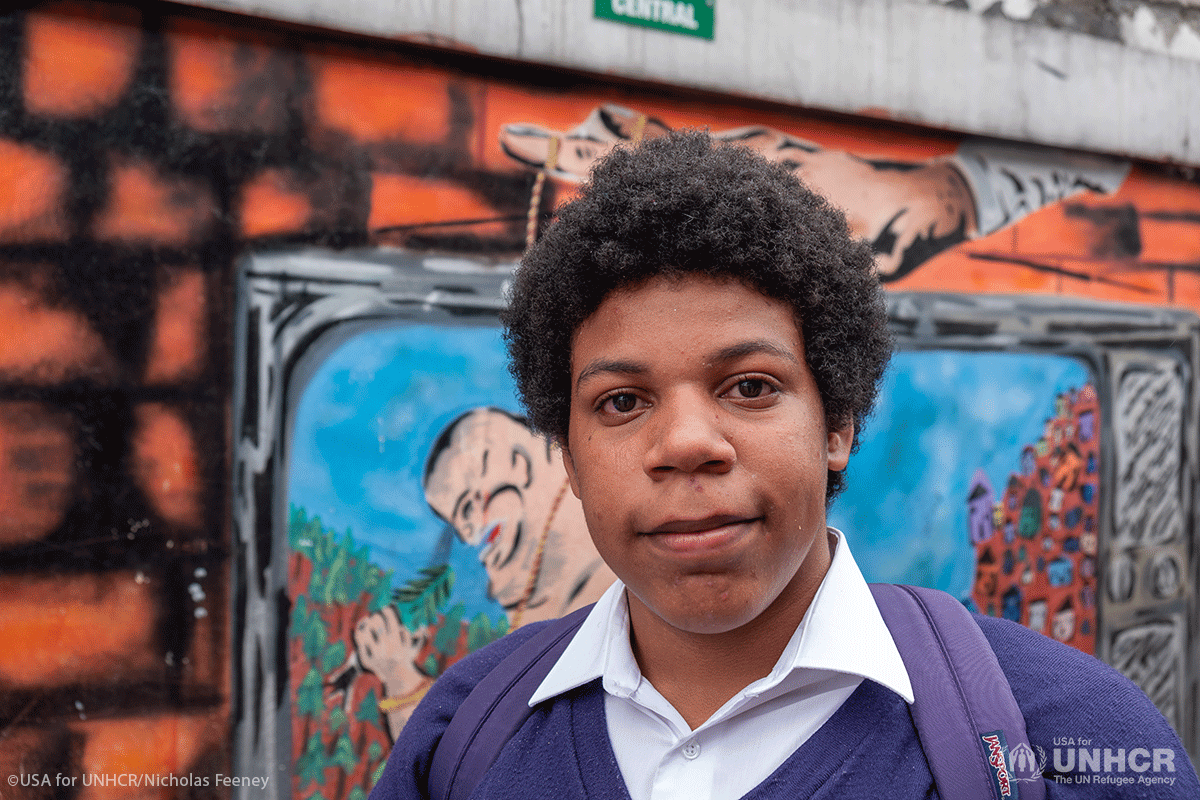
No longer burdened with the thought that they don’t belong, Michelle and Luis have found a safe, welcoming place to regain their adolescence. They each want to go to college after high school. Luis playfully joked that in addition to going to college, he hoped to be very tall.
How You Can Help
Whatever different paths Venezuelan refugees are on, the UN Refugee Agency is there providing protection and safety. The Venezuelans I met in Colombia were hopeful for the future – they were all resilient and ready to begin anew. I left more energized to keep working on behalf of refugees fleeing crises all over the world.
You can join us in our work by becoming our newest donor. Your gift will help protect millions of children, women and men who need help today.
*For safety of the individual, all names have been changed.
